 WASHINGTON-The U.S. military is set to run a "realistic" test Friday of a system built to knock out long-range missiles that could be fired by North Korea or Iran, the Pentagon said.The drill, over the Pacific, will be the first since September 2007 involving an attempted intercept by the sole U.S. shield against long-range ballistic missiles.Boeing Co is prime contractor for the system, called the ground-based midcourse defense. It is part of an emerging, layered shield against missiles that could be tipped with chemical, biological or nuclear warheads."Target is representative of the type we would expect from a country like North Korea or Iran," said Richard Lehner, a spokesman for the Pentagon's Missile Defense Agency."It is also realistic in terms of distance involved, trajectory, speed and timeframe, i.e., about 30 minute flight of threat missile," he said in an emailed reply to Reuters. President George W. Bush has been spending roughly $10 billion a year on all aspects of missile defense, the Pentagon's costliest annual outlay for an arms development program. The United States and Russia are at odds over a Bush administration plan to extend the Boeing-managed system into Eastern Europe, using 10 silo-based two-stage interceptors in Poland and a related radar system in the Czech Republic.President-elect Barack Obama, on his transition website, says he supports missile defense, but will avoid drawing resources from other national security priorities "until we are positive the technology will protect the American public."To date, the core ground-based defense system has destroyed its target in six of nine attempts, according to the Missile Defense Agency. Overall, there have been 36 intercepts in 46 tries across all elements of the evolving shield, including ship-based and intermediate-range systems, the agency reckons.Thomas Christie, the Pentagon's chief weapons tester for four years starting in 2001, said the stakes were high at a time when the U.S. defense budget could be constrained by U.S. economic problems."They have to have a success or the program is in deep trouble, both with Congress and the new administration," he said.Victoria Samson, an expert on missile defense at the private Center for Defense Information, said that, even if the test succeeded on Friday, it did not prove the United States had an effective or reliable shield."It has a long way to go before we could depend on it to work in a non-test environment," she said.The planned test on Friday is to use a long-range interceptor from Vandenberg Air Force Base, California, against a missile with a dummy warhead fired from Kodiak, Alaska. The interceptor will be cued by four target-tracking sensors, the Pentagon said.Lehner, the spokesman, cautioned that weather at Kodiak was iffy, with rain forecast. "Range safety officials will make a determination as to whether or not it is safe to launch the target, but not until tomorrow during the test window" of 3 PM to 7 PM EST, he said.
WASHINGTON-The U.S. military is set to run a "realistic" test Friday of a system built to knock out long-range missiles that could be fired by North Korea or Iran, the Pentagon said.The drill, over the Pacific, will be the first since September 2007 involving an attempted intercept by the sole U.S. shield against long-range ballistic missiles.Boeing Co is prime contractor for the system, called the ground-based midcourse defense. It is part of an emerging, layered shield against missiles that could be tipped with chemical, biological or nuclear warheads."Target is representative of the type we would expect from a country like North Korea or Iran," said Richard Lehner, a spokesman for the Pentagon's Missile Defense Agency."It is also realistic in terms of distance involved, trajectory, speed and timeframe, i.e., about 30 minute flight of threat missile," he said in an emailed reply to Reuters. President George W. Bush has been spending roughly $10 billion a year on all aspects of missile defense, the Pentagon's costliest annual outlay for an arms development program. The United States and Russia are at odds over a Bush administration plan to extend the Boeing-managed system into Eastern Europe, using 10 silo-based two-stage interceptors in Poland and a related radar system in the Czech Republic.President-elect Barack Obama, on his transition website, says he supports missile defense, but will avoid drawing resources from other national security priorities "until we are positive the technology will protect the American public."To date, the core ground-based defense system has destroyed its target in six of nine attempts, according to the Missile Defense Agency. Overall, there have been 36 intercepts in 46 tries across all elements of the evolving shield, including ship-based and intermediate-range systems, the agency reckons.Thomas Christie, the Pentagon's chief weapons tester for four years starting in 2001, said the stakes were high at a time when the U.S. defense budget could be constrained by U.S. economic problems."They have to have a success or the program is in deep trouble, both with Congress and the new administration," he said.Victoria Samson, an expert on missile defense at the private Center for Defense Information, said that, even if the test succeeded on Friday, it did not prove the United States had an effective or reliable shield."It has a long way to go before we could depend on it to work in a non-test environment," she said.The planned test on Friday is to use a long-range interceptor from Vandenberg Air Force Base, California, against a missile with a dummy warhead fired from Kodiak, Alaska. The interceptor will be cued by four target-tracking sensors, the Pentagon said.Lehner, the spokesman, cautioned that weather at Kodiak was iffy, with rain forecast. "Range safety officials will make a determination as to whether or not it is safe to launch the target, but not until tomorrow during the test window" of 3 PM to 7 PM EST, he said.By Jim Wolf
To read more go to:
As in the days of Noah...









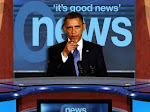


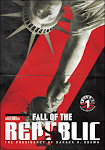





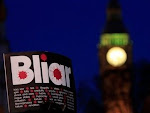
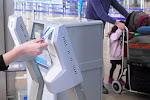










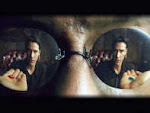







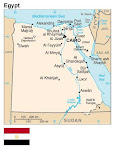


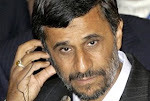





















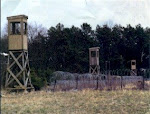









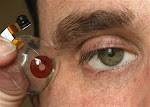












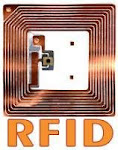.bmp)



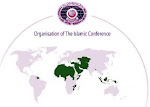




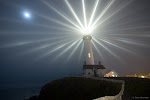
















.bmp)